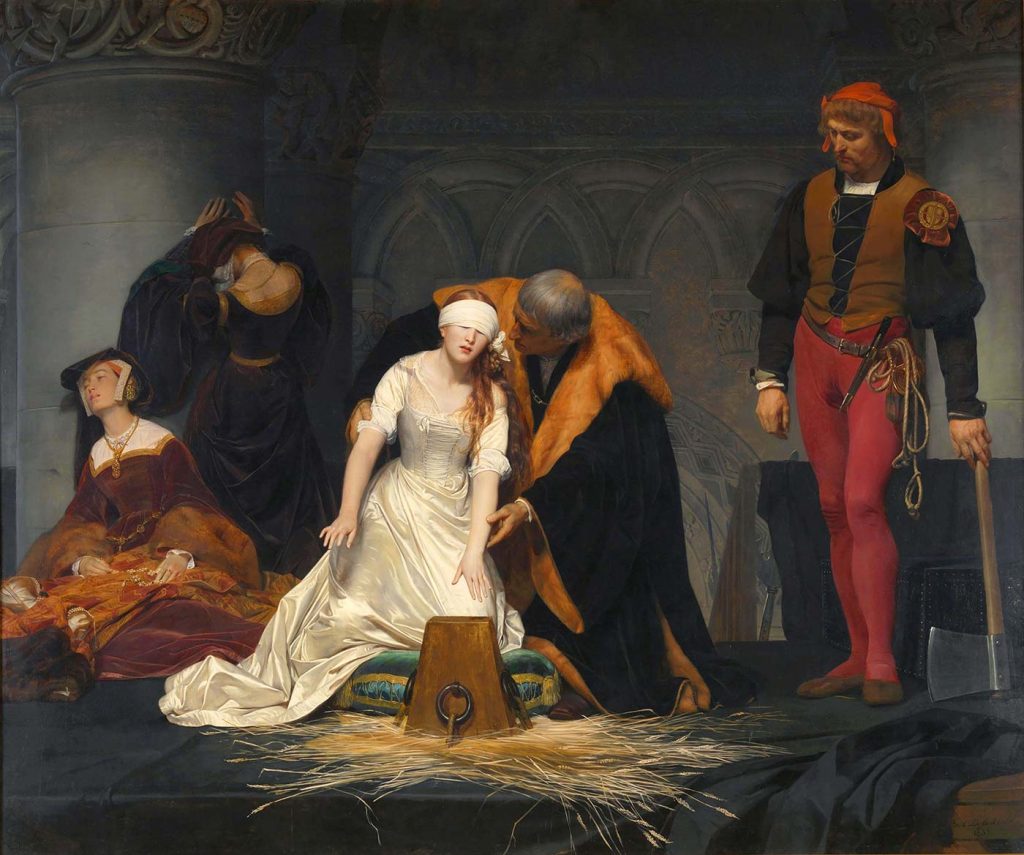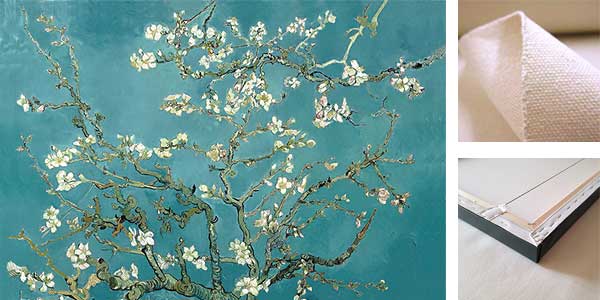
The Execution of Lady Jane Grey by Paul Delaroche was created in 1833. The painting is in National Gallery London. The size of the work is 246 x 297 cm and is made of oil on canvas.
About the Work
Lady Jane Grey reigned for just nine days as Queen of England following the death of Edward VI in July 1553: she was deposed by the faction supporting Edward’s half-sister and heir, the Catholic Mary Tudor. Tried for treason, the 17-year-old Lady Jane was beheaded at Tower Hill on 12 February 1554.
In the catalogue for the 1834 Salon, where the painting was first exhibited, Delaroche quoted from a text about Protestant martyrs, Martyrologe des protestants, which was published in 1558. Describing her final moments, the excerpt tells how the blindfolded Lady Jane pleaded, ‘What shall I do? Where is the block?’ It is this moment that the painting shows, as the helpless Lady Jane is guided to the execution block by Sir John Brydges, Lieutenant of the Tower. Her outer clothing has already been removed and is gathered in the lap of a lady-in-waiting, who has slumped to the ground. Behind her, a second lady-in-waiting stands facing the wall, unable to watch. To the right, a fifth figure, the executioner, stands waiting.
Delaroche uses a dark monochrome background of Romanesque architecture as a foil for the illuminated life-size figures – in particular the group in the centre-right – and the rich reds, browns and blacks of their clothing. Lady Jane is the visual focus of the painting, as the bright sheen of her satin petticoat (its radiant whiteness symbolising her innocence), pale skin and gleam of her wedding ring stand out from the oppressive gloom. No one in the picture looks at us, and nothing, except for the brightly-lit straw laid down to soak up the blood, comes between us and what is about to happen. The smooth finish of the paint and its lack of visible brushwork further enhance the illusion. Read more in National Gallery London
About the Artist
Hippolyte-Paul Delaroche (Paris, 17 July 1797 – Paris, 4 November 1856)[1] was a French painter who achieved his greater successes painting historical scenes. He became famous in Europe for his melodramatic depictions that often portrayed subjects from English and French history. The emotions emphasised in Delaroche’s paintings appeal to Romanticism while the detail of his work along with the deglorified portrayal of historic figures follow the trends of Academicism and Neoclassicism. Delaroche aimed to depict his subjects and history with pragmatic realism. He did not consider popular ideals and norms in his creations, but rather painted all his subjects in the same light whether they were historical figures like Marie-Antoinette, figures of Christianity, or people of his time like Napoleon Bonaparte. Delaroche was a leading pupil of Antoine-Jean Gros and later mentored a number of notable artists such as Thomas Couture, Jean-Léon Gérôme, and Jean-François Millet. Read more in Wikipedia
Order a reproduction of this work (printed on canvas)
